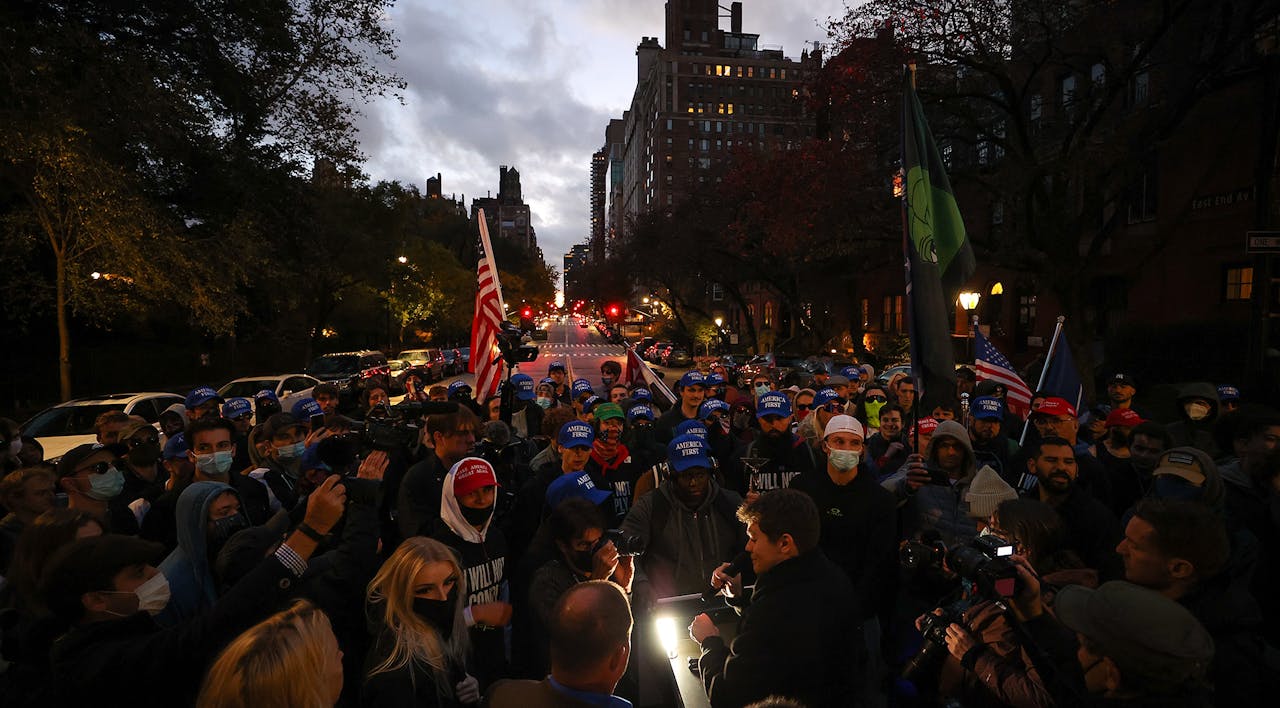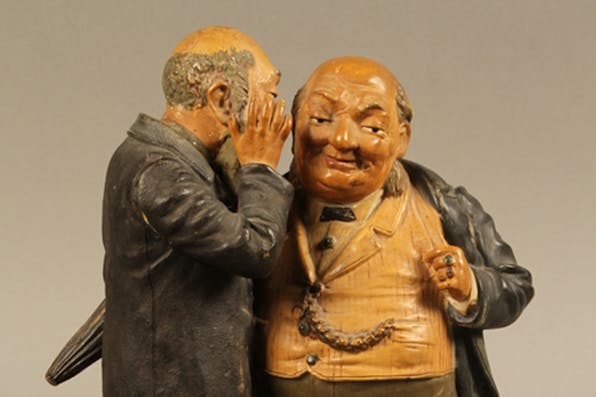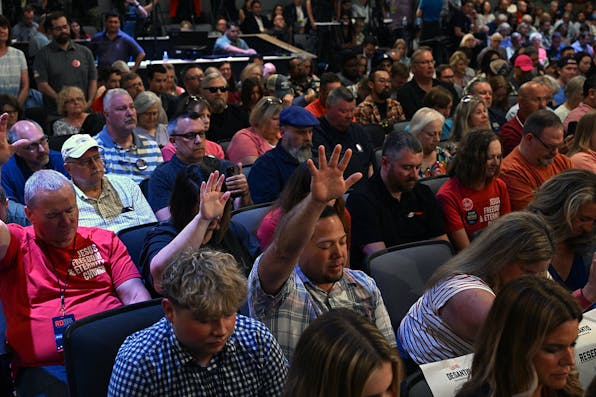
June 2023
From Coy to Goy
How America’s far right found its anti-Semitic voice and figured out its true identity.
“Strap yourselves in, ’cos guess what? 2023, we’re talking about Jewish power. 2023, we’re talking about the Holocaust. That’s where it had to go.”—Nick Fuentes
I arrived in New York four years ago with a familiar Jewish story: I was running from anti-Semitism. I came of age in a cosmopolitan London in which it was the norm to be vehemently anti-Israel and anti-Semitic attitudes were commonplace. I was told as a preteen by campmates that their parents would not allow them to befriend Jews. When I divulged my Jewishness to colleagues during an internship in Parliament, I was interrogated about whether my family served in the IDF. In college, I was barricaded into a room by anti-Zionist protestors who laughed and filmed me while they banged on the windows. It was the post-Iraq War, post-financial-crash era, and Britain was not doing well. The far left, led by Jeremy Corbyn, saw an opening, built a new movement, and soon took over the Labor party. Corbyn and his followers, some instinctively and some consciously, wielded anti-Semitism as a political strategy—as a wedge to divide the hacks from the pure-hearted and as a signal of their willingness to tell brave truths about the world. The targets of this strategy were not, in the main, the conservatives on the other side of the parliamentary chamber. They were the remnants of the Blairite center-left within Corbyn’s own party, and, well, many of them just so happened to be Jews.
To be sure, I wasn’t one of those targets. I was a conservative from the moment I understood the word, and the movement it connoted. This was my other reason for leaving the UK: I had set my sights on the conservative movement in the United States, to me the most admirable and successful of its kind. And one of the key things that drew me in was the unique position of the Jews there. It took time and very hard work for those Jews, many of them known, rightly or wrongly, as neoconservatives, to entrench themselves—to escape suspicion and to be welcomed in a movement that had been known for its crackpots. But, starting in the 1970s, they, with the help of figures like William F. Buckley, made it happen.
Responses to June ’s Essay

June 2023
Anti-Modern Anti-Semitism
By Tara Isabella Burton
June 2023
Unchurched Christians and Anti-Semitic Ones
By Timothy P. Carney
June 2023
What American Conservatives Can Do about Right-Wing Anti-Semitism
By Tamara Berens
June 2023
Watch Douglas Murray, Samuel Goldman, and Tamara Berens on Anti-Semitism and the Battle for the American Right
By The Editors